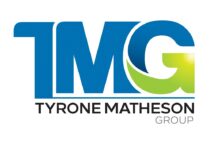Introduction:
In today’s fast-paced business landscape, the ability to leverage processes strategically can be the difference between thriving and merely surviving. As markets evolve and competition intensifies, businesses must constantly seek ways to streamline operations, optimize workflows, and innovate new approaches to stay ahead. Mastering the art of process management is not just a good practice; it’s a strategic imperative that can propel your business to new heights.
Whether you’re a small start-up or a large corporation, the principles of strategic process leveraging apply to all. From identifying efficiency bottlenecks to effectively implementing Lean Principles, every step you take to optimize your processes can significantly impact your bottom line. By aligning processes with your business objectives and capitalizing on process innovation opportunities, you can differentiate yourself in the market and gain a competitive edge.
Join us as we delve into the world of strategic process leveraging and discover how it can transform your business for success. Together, we’ll explore the strategies and best practices to help you streamline operations, optimize workflows, and innovate new approaches to achieve your business goals.
Strategic Process Leveraging: Streamlining Operations for Strategic Edge:
Streamlining operations is not just about cutting costs or reducing workforce; it’s about optimizing every aspect of your business to achieve maximum efficiency and effectiveness. By identifying efficiency bottlenecks, companies can pinpoint areas that need improvement and develop strategies to address them. These bottlenecks can be caused by various factors such as outdated processes, lack of communication between departments, or inefficient use of resources.
Implementing Lean Principles effectively is essential for streamlining operations. Lean is a systematic approach to identifying and eliminating waste through continuous improvement. This approach focuses on creating customer value while minimizing process waste. By implementing Lean Principles, businesses can improve process flow, reduce lead times, and enhance overall productivity.
One key aspect of Lean is empowering employees to identify and solve problems. Employees are often the ones most familiar with the day-to-day operations and can provide valuable insights into areas that need improvement. By involving employees in streamlining operations, businesses can create a culture of continuous improvement where everyone is committed to making the company more efficient and effective.
In today’s fast-paced business environment, streamlining operations is crucial for gaining a competitive edge. Businesses that can identify efficiency bottlenecks, implement Lean Principles effectively, and empower employees to contribute to streamlining operations are better positioned to succeed in the long run. By streamlining operations, businesses can reduce costs, improve customer satisfaction, and enhance their overall competitiveness in the market.
Process Optimization: A Strategic Imperative:
Process optimization is not just about making minor tweaks here and there; it’s about fundamentally transforming how a business operates to achieve maximum efficiency and effectiveness. Continuous improvement is at the core of process optimization, as enterprises must constantly evaluate and refine their processes to keep up with the market’s changing demands. By embracing a culture of continuous improvement, companies can stay ahead of the competition and ensure that their processes are always aligned with their business objectives.
Utilizing technology for process enhancement is another crucial aspect of process optimization. Technology has the power to revolutionize how businesses operate, offering tools and solutions that can automate tasks, improve communication and collaboration, and provide valuable insights through data analytics. By leveraging technology, companies can streamline operations, reduce costs, and improve efficiency.
In today’s rapidly evolving business landscape, process optimization is not just a good practice; it’s a strategic imperative. Businesses that continuously improve their processes and leverage technology to enhance them are better positioned to succeed in the long run. By optimizing their processes, companies can stay ahead of the curve, adapt to changing market conditions, and achieve long-term success.

Leveraging Processes for Competitive Edge:
In today’s rapidly evolving business landscape, effectively leveraging processes is crucial for maintaining a competitive edge. Businesses that can align their processes with their overall business objectives are better positioned to achieve their goals and outperform their competitors. Aligning processes with business objectives ensures that every action taken within the organization contributes to the overarching mission and vision, leading to more efficient and effective operations.
Furthermore, capitalizing on process innovation opportunities is essential for businesses looking to stay ahead in the market. By constantly seeking ways to innovate and improve their processes, companies can differentiate themselves from competitors and adapt to changing market conditions. Process innovation allows businesses to streamline operations, reduce costs, and improve customer satisfaction, all contributing to a stronger competitive position.
Ultimately, businesses that can leverage processes effectively are more likely to succeed in today’s fast-paced and competitive business environment. By aligning processes with business objectives and capitalizing on process innovation opportunities, companies can differentiate themselves, drive growth, and achieve long-term success.
Strategic Advantage Through Process Efficiency:
Achieving strategic advantage requires more than just efficiency; it requires process efficiency. Developing robust process documentation and empowering employees to improve processes are key to achieving this goal. Robust process documentation ensures processes are well-defined, understood, and followed consistently across the organization.
Empowering employees to improve processes is another crucial aspect of achieving process efficiency. Companies can tap into their knowledge and expertise by involving employees in the process improvement process to identify and implement improvements. Achieving process efficiency allows companies to reduce costs, improve quality, and increase customer satisfaction, giving them a strategic advantage in today’s competitive business landscape.
Mastering Processes for Strategic Success:
Mastering processes is essential for achieving strategic success. Training and development for process excellence are crucial, as is measuring process performance and success metrics. Training and development ensure employees have the necessary skills and knowledge to execute processes effectively.
Measuring process performance and success metrics allows companies to track the effectiveness of their processes and make informed decisions for improvement. Mastering processes will enable companies to streamline operations, reduce costs, and improve customer satisfaction, positioning them for strategic success in today’s competitive business landscape.
Processes as Key Strategic Assets:
Processes are not just operational necessities; they are also vital strategic assets. Integrating processes across the organization and protecting processes as intellectual property can help companies maintain their competitive edge. Integrating processes ensures that they are aligned with the overall goals and objectives of the organization.
Protecting processes as intellectual property ensures that competitors cannot easily replicate them, giving companies a competitive advantage. Processes are critical strategic assets that can help companies streamline operations, reduce costs, and improve customer satisfaction, positioning them for long-term success in today’s competitive business landscape.
Conclusion:
In conclusion, strategic process leveraging is essential for businesses looking to succeed in today’s competitive landscape. By streamlining operations, optimizing processes, and leveraging technology, companies can gain a strategic edge and position themselves for long-term success.
FAQs:
1. How can businesses identify efficiency bottlenecks?
– Businesses can identify efficiency bottlenecks by thoroughly analyzing their processes and workflows.
2. What are some familiar Lean Principles that can be implemented effectively?
– Some familiar Lean Principles include identifying and eliminating waste, improving process flow, and empowering employees.
3. How can businesses align processes with business objectives?
Businesses can align processes with their objectives by clearly defining them and ensuring that their processes are designed to support these objectives.
By focusing on strategic process leveraging, businesses can position themselves for success and gain a competitive edge in today’s fast-paced business environment.
Empower Your Startup: Diversify, Grow, Succeed! – Let’s talk!
